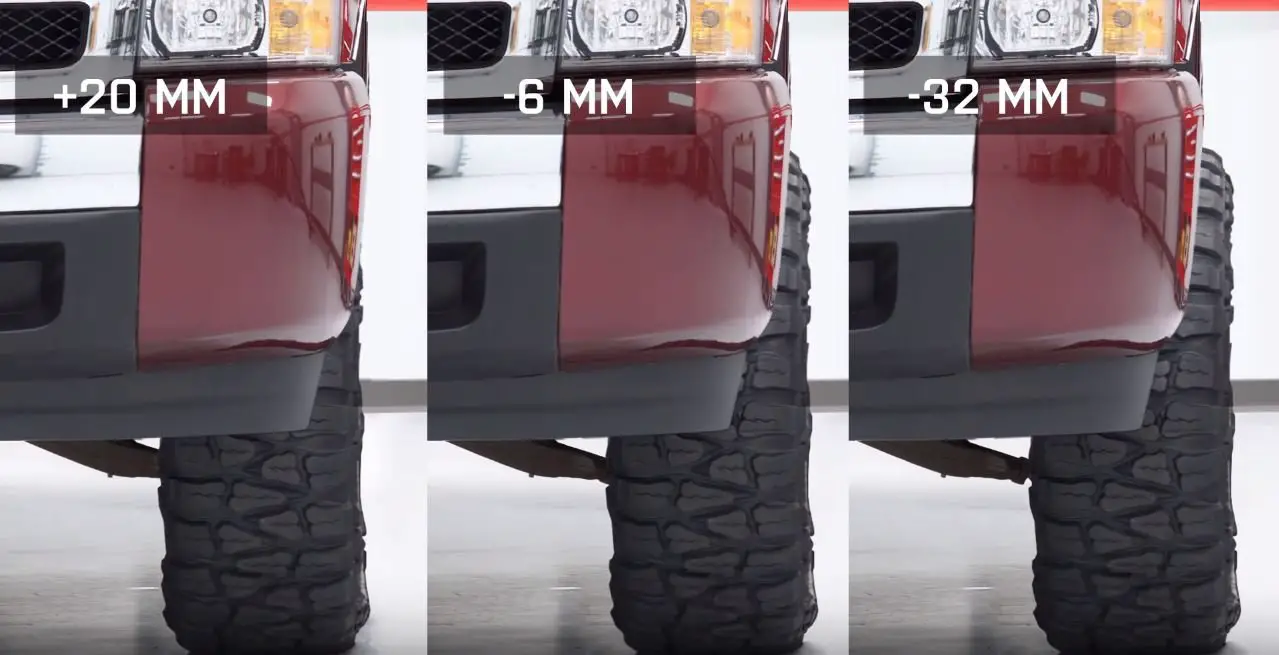The subtle allure of a perfectly stanced vehicle often escapes casual observers. They see a car, perhaps lowered, perhaps with aggressively wide tires, but the underlying mechanics of how it all comes together remain a mystery. At the heart of this aesthetic lies wheel offset, a seemingly simple measurement with profound implications for a vehicle’s appearance, handling, and overall performance.
Understanding wheel offset is crucial for anyone looking to modify their vehicle’s wheels. It’s more than just a number; it’s the key to unlocking a world of possibilities, and potentially, a world of problems if misunderstood. Let’s delve into the intricacies of this critical concept.
Defining Wheel Offset: The Hub-Mounting Surface’s Position
Wheel offset, at its core, is the distance between the wheel’s hub-mounting surface—the part that bolts directly to the vehicle’s hub—and its centerline. This distance is typically measured in millimeters (mm) and can be either positive, negative, or zero. The sign dictates where that surface is relative to the wheel’s centerline. It is important to understand that these values indicate the change in stance, rather than the actual measurement of the wheel.
A positive offset means the hub-mounting surface is located towards the outside of the wheel, closer to the street-facing side. This is the most common type of offset, particularly on front-wheel-drive vehicles and many modern cars. Imagine pushing the entire wheel inwards towards the car; that’s what positive offset effectively does.
Conversely, a negative offset positions the hub-mounting surface towards the inside of the wheel, closer to the vehicle’s suspension components. This pulls the wheel outwards, creating a wider stance often favored in off-road and performance applications. Think of it as pulling the wheel away from the car’s chassis.
Finally, zero offset means the hub-mounting surface is precisely aligned with the wheel’s centerline. While less common, it represents a neutral position where the wheel’s load is distributed equally.
The Ramifications of Offset Alteration
Changing wheel offset is not simply an aesthetic choice; it significantly impacts several aspects of a vehicle. Firstly, it affects the scrub radius. Scrub radius is the distance, as seen from the front, between the king pin axis and the center of the contact patch of the wheel, where both would theoretically touch the road surface. Altering the offset changes this geometry. This change can influence steering feel, stability, and even tire wear.
A larger positive offset effectively narrows the track width, potentially leading to reduced stability, especially during cornering. Conversely, a larger negative offset widens the track width, potentially improving stability but also increasing stress on wheel bearings and suspension components. This widening also increases the moment arm about the axle, necessitating higher capacity components due to greater loads being applied to them.
Furthermore, incorrect offset can cause tire rubbing against the fender wells or suspension components. This is not only annoying but also potentially dangerous, as it can damage tires and impair steering.
Backspacing: A Related Concept
While often used interchangeably with offset, backspacing is a distinct measurement. Backspacing is the distance from the wheel’s hub-mounting surface to the innermost edge of the wheel. It’s typically measured in inches. While backspacing and offset are related, knowing one doesn’t automatically tell you the other, especially when dealing with wheels of varying widths. You will have to employ an equation to determine one from the other.
Calculating Offset: A Crucial Step
Before purchasing new wheels, it’s imperative to calculate the appropriate offset. Online calculators and reference guides can assist with this process, but understanding the underlying principles is essential. Factors such as wheel width, desired stance, and clearance requirements must be considered. Consulting with a wheel specialist is highly recommended, especially for those unfamiliar with the intricacies of wheel fitment. They can measure the vehicle’s available space, taking into account the suspension components and fender clearances, to recommend an appropriate offset.
Beyond Aesthetics: The Performance Angle
While aesthetics are a primary driver for many wheel modifications, offset also plays a crucial role in performance. Correct offset optimizes handling, ensures proper weight distribution, and minimizes stress on suspension components. In motorsport applications, precise offset adjustments can fine-tune a vehicle’s handling characteristics, providing a competitive edge.
Navigating the Aftermarket: A Word of Caution
The aftermarket wheel industry offers a plethora of options, but not all wheels are created equal. Opting for reputable brands and ensuring proper fitment are paramount. Avoid wheels with extreme offsets that could compromise safety or damage the vehicle. Always prioritize quality and compatibility over purely aesthetic considerations.
Conclusion: A Deep Dive into a Seemingly Simple Measurement
Wheel offset is far more than just a number. It’s a fundamental aspect of wheel fitment that influences a vehicle’s appearance, handling, and overall performance. By understanding the principles of offset and taking the time to calculate the appropriate values, enthusiasts can unlock the full potential of their vehicles while ensuring safety and reliability. It is a cornerstone of the automotive modification world. So, the next time you admire a perfectly stanced vehicle, remember the intricate calculations and careful considerations that lie beneath the surface.









Leave a Comment